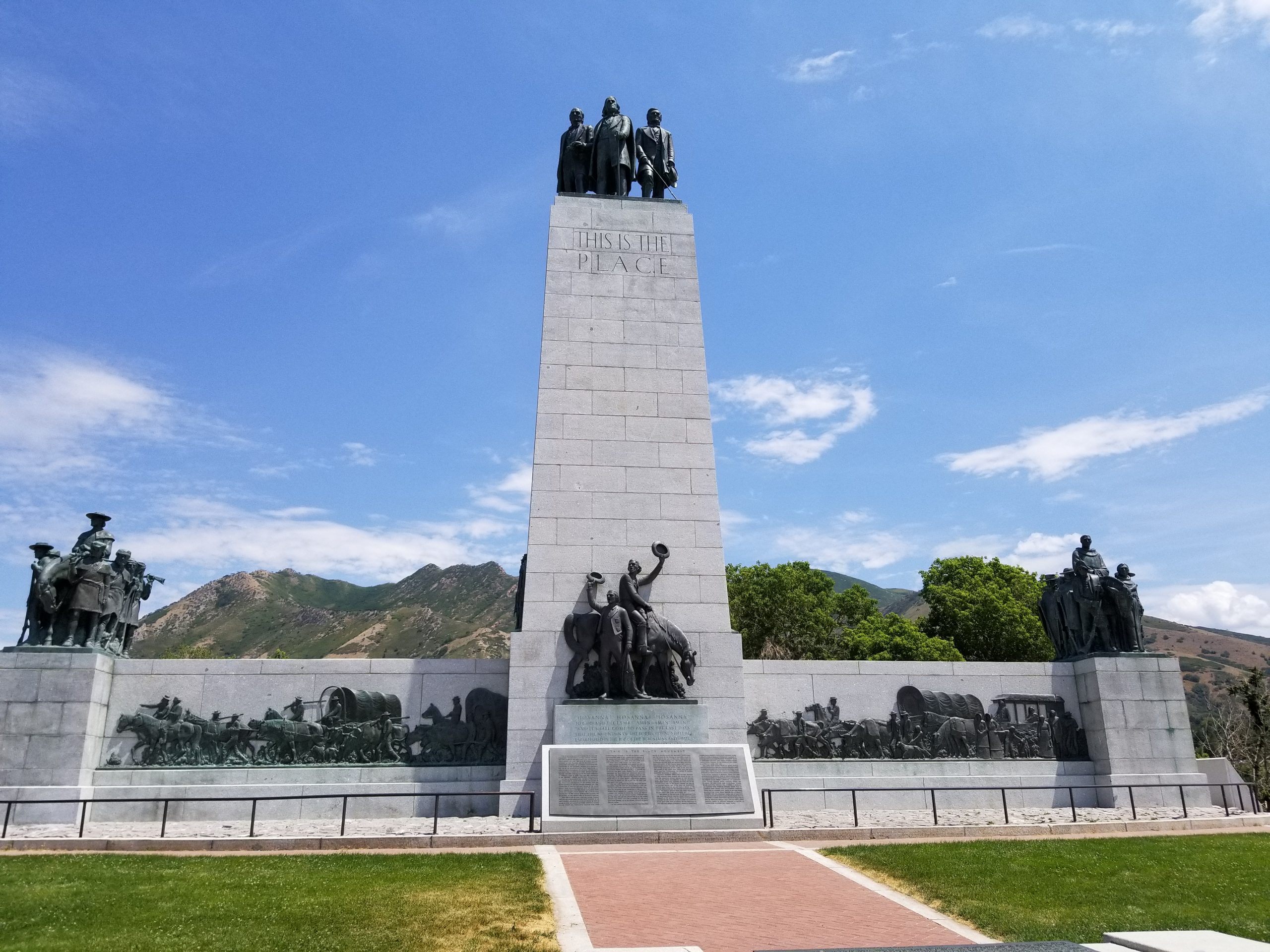Placed by: Mayor Larell D. Muir and Park and Operation Superintends Lynn F. Pett and Bill D. Crocker
GPS Coordinates: 40°39’37.7748”N 111°53’16.7136”W
Historical Marker Text
To raise the nation’s conscience to the plight of the first American so they won’t be forgotten, but will be remembered in our minds and in our hearts. This statue is sculpted out of a giant cottonwood tree in honor of Utah Native Americans – Southern and Northern Ute, Sothern Shoshone, Goshutes, Paiute, and Navajo. Creator Peter “Wolf” Toth, is sculpturing statues for all 50 states.
Dedicated: November 23, 1985
Mayor: Larell D. Muir
Park & Operation Superintendents: Lynn F. Pett and Bill D. Crocker
Extended Research:
In 1985, the mayor of Murray, Utah, Larell D. Muir, commissioned Peter “Wolf” Toth to sculpt a statue of “Chief Wasatch”. It continues to greet visitors at the entrance of Murray Park to this day. The statue may prompt people to think that “Chief Wasatch” was a great leader of one of the Native American tribes in Utah. However, this was not the case; in fact, “Chief Wasatch” was not an actual person. The statue was not created to honor a specific individual, but rather to honor the many Native Americans who lived in Utah long before fur traders, explores, and Euro-American settlers came to Utah. In this regard, “Chief Wasatch” stands in for all Utah Native Americans and represents their history and legacy.
There is not much known about the earliest Native American inhabitants of Utah. This is because they did not have a written language and did not come into contact with groups that did. The little bit that we do know is from artifacts such as worn sandals, food caches, stone houses, silk weed nets, and even human droppings[1]. After the Desert Archaic, the Fremont Indians made the transition out of caves and started to build their own shelters. They also learned how to farm but it is not known where they learned this skill. With farming, they also started to build granaries to protect what they grew[2]. They would build several homes and granaries near each other to create a sort of village. This marked a transition from a nomadic lifestyle to a more stationary one. The Fremont also spread throughout the region until there were many different Fremont sites across the area that would become Utah.
The Fremont were eventually displaced by or absorbed by the Ute, Goshute, Shoshone, and Southern Paiute. Each of these tribes thought that the land they lived on was sacred and that their God intended for them to live there. Creation narratives instilled in tribal members a sacred connection between the land and the people. With this in mind, it is easier to understand why there was sometimes tension between the Ute, Goshute, Southern Paiute, Shoshone and the Mormon pioneers. Mormon settlers came into the Great Basin and built homes and communities on lands that the Native Americans considered sacred. This tension lead to many conflicts and sadly the eventual removal of the Native Americans to reservations.
It is because of this removal that Mayor Larell D. Muir arranged for a sculpture of “Chief Wasatch” at Murray Park. Muir wanted to honor and make sure that Utah’s Native Americans would not be forgotten. Now when people enter Murray Park or drive past the park on State Street they can see “Chief Wasatch” and remember the Native Americans of Utah.
[1] Dean L. May, Utah: A People’s History (Salt Lake City: University of Utah Press, 1987), 12.
[2] May, 14.
For Further Reference:
Primary Source:
Acts, Resolutions, and Memorials, Passed by the First Annual, and Special Sessions, of the Legislative Assembly of the Territory of Utah, Begun and held at Great Salt Lake City, on the 22nd day of September, A. D., 1851(Great Salt Lake City, Utah Territory: Brigham H. Young, Printer, 1852), 91-93.
Secondary Sources:
Clifford Duncan, “The Northern Utes of Utah,” in A History of Utah’s American Indians, ed.
Forrest S. Cuch, (Salt Lake City: Utah Division of Indian Affairs and Utah Division of State History, 2000), 167-8.
“The Deseret News.” Google News Archive Search. Accessed April 19, 2017. https://news.google.com/newspapers safe=strict&nid=336&dat=19851112&id=a9lUAAAAIBAJ&sjid=8oMDAAAAIBAJ&pg=4787%2C6022654&hl=en.
Iverson, Kristen. “Living History: How the giant Chief Wasatch came to Murray Park.” The Salt Lake Tribune. September 22, 2011. Accessed April 19, 2017. http://archive.sltrib.com/story.php?ref=%2Fsltrib%2Fnews%2F52624885-78%2Ftoth-murray-chief-park.html.csp.
May, Dean L. “Man and Desert.” Utah: A People’s History. Salt Lake City: U of Utah Press,
- 1-19.
Thomas G. Alexander, Utah, The Right Place: The Official Centennial History (Salt Lake City:
Gibbs Smith Publisher, 1995), 29-30.
W.Paul Reeve, Making Space on the Western Frontier: Mormons, Miners, and Southern
Paiutes (Urbana and Chicago: University of Illinois Press, 2006), 12.


